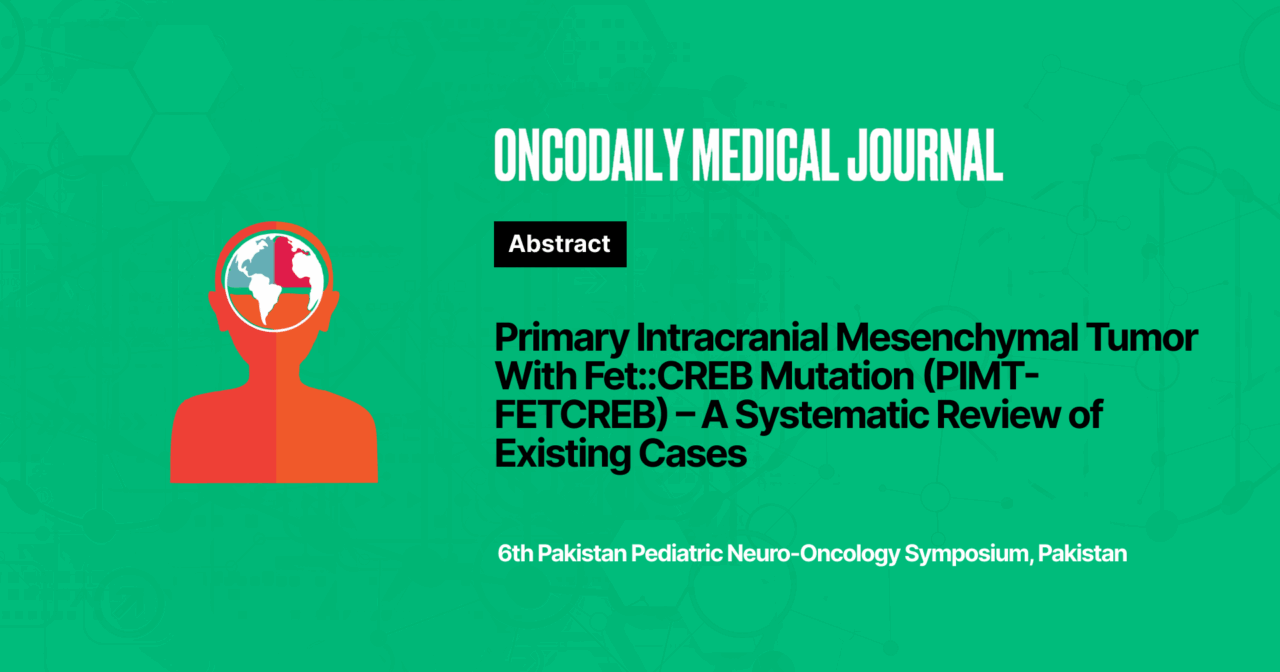Primary Intracranial Mesenchymal Tumor With Fet::CREB Mutation (PIMT-FETCREB) – A Systematic Review of Existing Cases
Abstract
Introduction: Mesenchymal tumors (MT), originate from mesoderm and are frequently found in all parts of body except central nervous system (CNS). Their presentation in CNS is unusual. The terms, Angiomatoid Fibrous Histiocytoma (AFH), and Intracranial Myxoid Mesenchymal Tumor (IMMT) are used for same tumors. To date no synthetic evidence summaries primary intracranial mesenchymal tumor with FET::CREB mutation (PIMT-FETCREB). To elaborately study the demographics, clinic-radiological presentation and management of PIMT-FETCREB along with their prognosis.
Methodology: A comprehensive literature search using Pub-Med and Google Scholar was conducted as per preferred reporting items for systematic review and meta-analysis (PRISMA), in time duration of 2000-2025 revealing 41 studies. Quality assessment was performed using Joanna Briggs Institute criteria and descriptive analysis with measures of central tendencies and central dispersion were utilized to analyze the variables.
Results: Data of total 61 patients was included in this systematic review. In pediatric group (23) mean age was 11.34±2.91 years and predominant gender was female 16 (69.56%). There were of total 38 adult patients (age >15) with the mean age of 34.60±15.07 years and gender predilection towards female 23 (60.52%). Most common initial presenting symptom was headache 41 (67.21%) followed by nausea and vomiting 26 (42.62%) and seizures 20 (32.78%). All tumors 61 (100%) showed contrast enhancement on imaging and there was perilesional edema in 35 (57.37%).
In both age groups, pediatrics 22 (95.65%) and adults 9 (76.31%), there was supratentorial predilection. All 61 (100%) patients underwent excision. Gross total resection was achieved in 54 (88.52%). Some patients were subjected to radiotherapy 14 (22.95%) and chemotherapy 9 (14.75%). On histopathological examination cells were shaped spindle 25 (40.98%), epithelioid 16 (26.22%) and rounded 10 (16.39%), immersed in collagen 24 (39.34%) or myxoid 19 (31.14%) rich stroma.
Immunohistochemistry predominantly shows EMA 54 (88.52%), CD99 48 (78.68%), CD68 30 (49.18%) desmin 20 (32.78%) markers. Molecular testing reveled fusion of FET gene, EWSR1 in 60 (98.36%) fusion with CREB family gene, including CREB1 20 (32.78%), ATF1 17 (27.86%) and CREM1 16 (26.225). Mean duration of follow up was 24.04±23.96 months. Alive patients without deficit were 50(81.96%). Death was reported in 3 (4.91%) cases and alive patients with deficits were 8 (13.11%).
Conclusion: PIMT-FETCREB is a newly emerging rare neoplastic entity affecting the CNS, with a number of combination of mutations from the FET::CREB family. Predominant in females, supratentorial renders gross total resection achievable in majority cases. The role of adjuvant therapy cannot be predicted based on the limited number of exposed cases. Survival of two years or more indicates favorable prognosis and a potential to combine multimodal management for future cases.
Conflict of Interest: None
Funding: None
Disclosure statement: This abstract represents preliminary findings from a systematic review that is currently in progress. The current author list includes contributors up to the data collection and initial analysis phase. Additional authors will be added to the final manuscript based on substantial contributions to the interpretation, discussion, and drafting of the full article. The completed manuscript is still under development.
License: This article is published under the terms of the Creative Commons Attribution 4.0 International License (CC BY 4.0).
© Faiqa Ijaz Khan, 2025. This license permits unrestricted use, distribution, and reproduction in any medium, provided the original author and source are credited.





